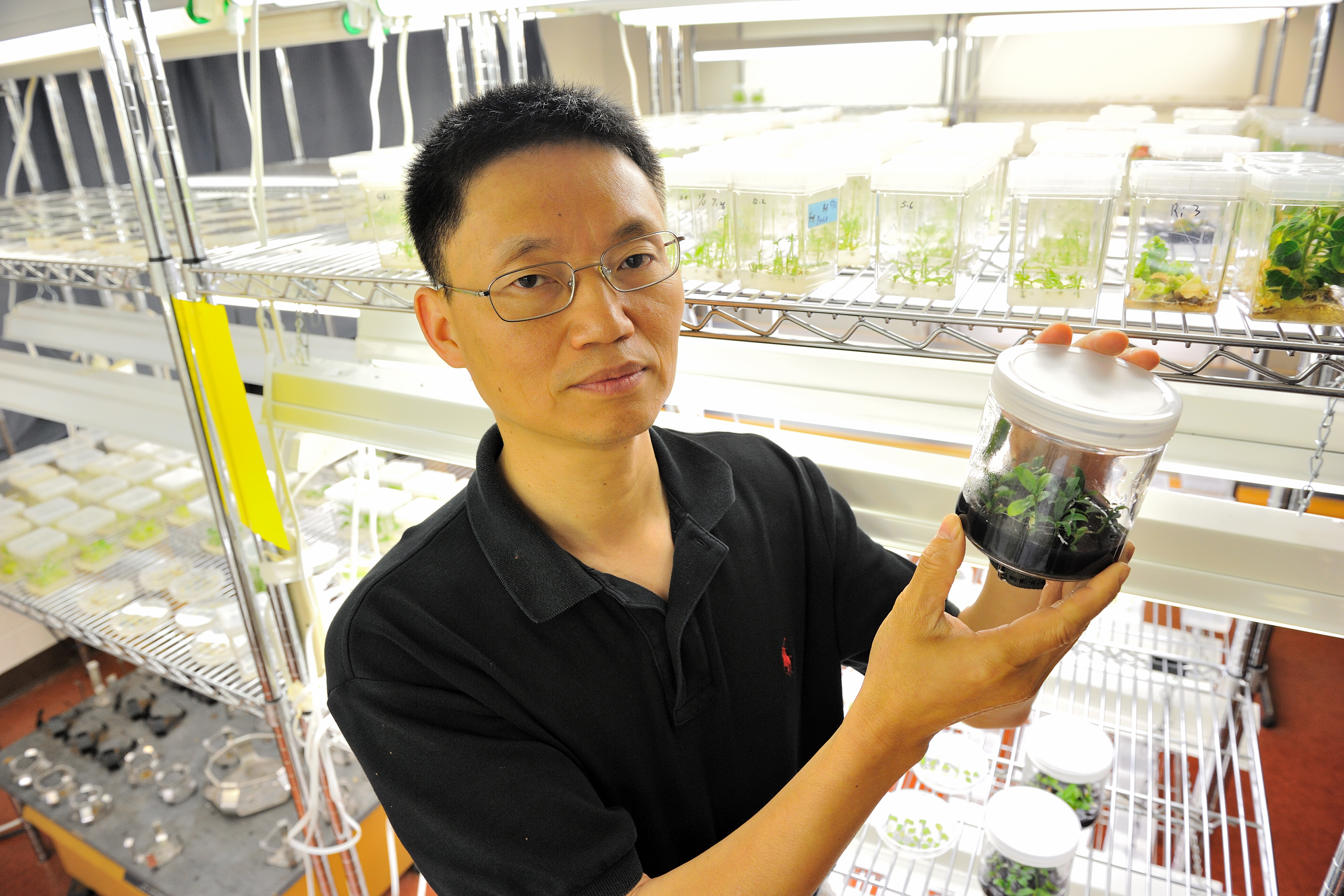When Secretary of Agriculture Sonny Perdue issued a statement on GMOS this spring explaining that the United States Department of Agriculture (USDA) does not plan to regulate plants created with technologies – including CRISPR – that are already in use and greatly speeding up the process of editing genomes, it came as good news to UConn plant science professor Yi Li.
Li and his team are using CRISPR-based techniques they have developed to try to make more resilient citrus crops. This gene-editing technology does not introduce any foreign genes, so the end-product is considered non-GMO. Li discusses the implications of the USDA announcement and the future of plant research with UConn Today.
What is CRISPR?
CRISPR (pronounced “crisper” and an abbreviation of Clustered Regularly Interspaced Short Palindromic) refers to genome-editing systems that have many potential applications, including in the areas of human health and crop plant breeding.
CRISPR genes of bacterial origin are normally introduced into the plant genome. The resulting modified plants are therefore genetically modified organisms, or GMOs. For annual crop plants such as corn and tomatoes, the GMO genes can be eliminated in sexual propagation and are therefore absent in the next generation of plants. However, for perennial crop plants that take years to reach reproductive stages or heterozygous annual plants, it is challenging to remove GMO genes from the edited plants without going through sexual reproduction.
Can you explain the new gene-editing technique your lab has developed?
My team here at UConn and our collaborators at other institutions have developed a convenient and highly useful technique to use the CRISPR genome-editing technology to reliably create desirable traits in crop plants without introducing any foreign genes such as the CRISPR genes.
To avoid the introduction of CRISPR genes into the plant’s genome, our group has used Agrobacterium, a naturally occurring, ubiquitous soil-borne bacterium, to transiently express the CRISPR components in plants, and therefore the genome-edited plant cultivars are non-GMO. With our method, the plant genome can be edited without introducing any foreign DNA, and then a two-step process is used to identify mutant plants. Our method provides a simple, reliable, and efficient solution for producing non-GMO varieties of heterozygous, perennial crop plants.
What are the potential applications of your techniques in crop improvement?

We are currently applying our technique in citrus. Citrus greening disease is the most devastating citrus disease worldwide. It was first detected in Florida in 2005, and has since affected all of Florida’s citrus-producing areas, leading to a 75 percent decline in Florida’s $9 billion citrus industry. Collaborating with scientists at the University of Florida, we hope our technique will lead to development of non-GMO citrus cultivars that are resistant to the disease. Also, my lab is applying this technique to developing other methods to use CRISPR to breed low-maintenance lawn grass varieties, and low-THC but high-CBD cannabis plant strains. THC is the chemical responsible for most of marijuana’s psychological effects, while CBD is effective in treating diverse mental and physical ailments with little health risk.
The technology my lab has created is simple and easy to use, and also cost-effective for crop plant improvement. It should be applicable in most perennial crop plants and some annual crop plants that are genetically heterogeneous or clonally propagated. These plants include, but are not limited to, apple, citrus, grape, banana, poplar, pine, eucalyptus, and many ornamental plants.
Are there any perceived hazards?
None that I can think of.
How do you see gene-editing technologies shaping the future of the consumer market?
There are not many GMO horticultural or forestry crop plants that have been commercialized in the past 20 years. That is largely because of public concern and the high costs associated with the deregulation process. However, with genome-editing technology along with the help of many other new technologies, including the one we have developed to produce non-GMO plant traits, it is expected that an astonishing number of new horticultural plant varieties created using genome-editing technologies will be developed and marketed within next 5 to 10 years.
How do you see the USDA statement shaping the future of plant research?
The USDA already does not regulate plant varieties created by genome editing and other new techniques that can expand traditional plant breeding tools, because the new techniques produce plant varieties that are indistinguishable from those developed through traditional breeding methods.
Our new technique may accelerate the use of genome-editing technology to improve perennial and heterozygous (where one of a pair of genes is dominant and one recessive) crop plants.
An article by Li about his groundbreaking genome-editing technique that was published in Horticulture Research in March, has been nominated by the editors-in-chief of SpringerNature as research they believe could help change the world.


